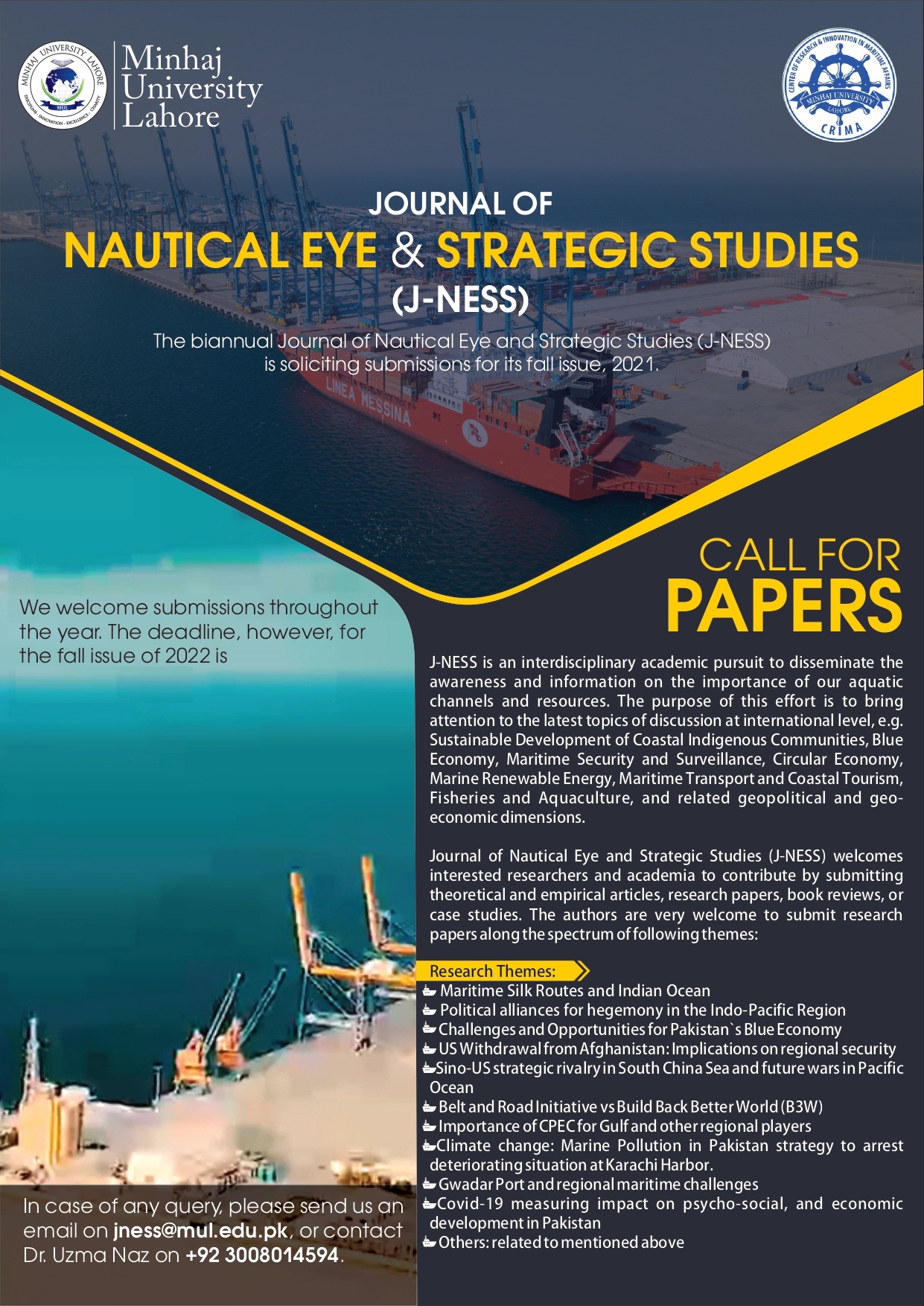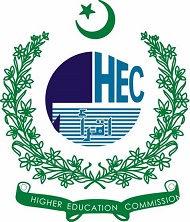Emerging Dynamics of Global Warming: A Case Study of Marine Life
DOI:
https://doi.org/10.58932/MULG0014Keywords:
Ecosystem, marine life, global warming, species, AquacultureAbstract
This study is focusing on global warming on marine life and information about blue economy, how can impacts as game changing as well as global effects on environment. According to this analysis, the effects of climate change may be seen throughout the evolution of the marine environment, affecting both the inhabitants and their habitats. Marine creatures and fish immensely disturb by it and respond of productivity is facing alarming time. According to analysts, the marine economy can the prospective to boost assets of such a coastline state. Here, we discuss its effects and the numerous changes that are increasingly important for scholars and international organizations to promote why it's critical to reduce climate change's effects. Its production and the subsequent rise in biological productivity across all ecosystem levels are advantages of global warming. Aquaculture, the introduction of new species, governmental management of fisheries, and the avoidance of marine pollution are a few examples of human activity that tries to safeguard the environment and manage resources. This investigation of blue economy elaborates the ecosystem mismanagement and environmental activities are giving the tough time marine inhabitants as well as human beings. Marine species and environment will be could proved profitable at largely.
References
Krutskikh B.A. (1991). Climatic Regime of the Arctic at the Turn of the Twentieth and Twenty- First Centuries, . (4rth Ed), New York.USA. Modern Times.pp206-212
Matishov G.G. (1992). Anthropogenous Destruction of the Ecosystems in the Barents and the Norwegian Seas, (3rd Ed), Washington.D.C. USA. Carnegie Endowment press.pp290-295
Matishov G.G. (1999). Oceanic periglacial in the evolution of Arctic marine ecosystems. (2nd Ed), UK.England. Oxford University Press.pp134-140
Matishov G.G. and Denisov V.V. (2000). Ecosystems and Biological Resources of Russian European
Seas at the Turn of the Twenty-First Century (5th Ed), New York.USA. Stein and Day press.p456
Beaugrand, G., & Kirby, R. R. (2018). How Do Marine Pelagic Species Respond to Climate
Change? Theories and Observations. Annual Review of Marine Science, (4rth Ed), Calcutt.India.Westland publications.p126
Beck, K. (2018). Direct and Indirect Effects of Long-Term Climatic Change on Terrestrial-
Aquatic Ecosystem Interaction in Tasmania. (1st VOL), Washinton.USA. Washington Government Printing Office.pp78.
Bjork, M., Short, F., Mcleod, E., & Beer, S. (2008). Managing Seagrasses for Resilience to
Climate Change. (1st Vol), Toronto.Canda. Lexington Books, Ltd. pp134
Blasco-Costa, I., Rouco, C., & Poulin, R. (2015). Biogeography of Parasitism in Freshwater
Fish: Spatial Patterns in Hot Spots of Infection. (3rd Ed), UK.Britain. Oxford University Press.pp315-320
Bonachea, L. A. (2019). A Low-Cost Laboratory Demonstration of the Effects of Temperature
on the Metabolism of an Aquatic Poikilotherm. (13th Vol), New York.USA.Metropolitain Books.pp309-312
Borja, A., Elliott, M., Andersen, J. H., Cardoso, A. C., Carstensen, J., Ferreira, J. G. et al. (2013). Good Environmental Status of Marine Ecosystems: What Is It and How Do We Know When We Have Attained It? (4rth Ed), New York.USA. Harper Collin Press.pp77-80
Borja, A., Galparsoro, I., Irigoien, X., Iriondo, A., Menchaca, I., Muxika, I. et al.(2011). Implementation of the European Marine Strategy Framework Directive: A Methodological Approach for the Assessment of Environmental Status, (5th Ed), London.England. Osprey publishers.p290
Chaudhary, C., Saeedi, H., & Costello, M. J. (2016). Bimodality of Latitudinal Gradients in Marine Species Richness. (1st Ed), Washington. USA.RAND Corporation. pp11-13
Commission, H. (2010). Ecosystem Health of the Baltic Sea 2003-2007: HELCOM Initial Holistic Assessment. Baltic Sea Environment Proceedings, (1ST Ed), London. England. The Penguin press. pp. 25-27
Dulvy, N. K., Rogers, S. I., Jennings, S., Stelzenmuller, V., Dye, S. R., & Skjoldal, H. R. (2008). Climate Change and Deepening of the North Sea Fish Assemblage: A Biotic Indicator of Warming Seas. Journal of Applied Ecology, (2nd Vol), Princeton USA. Princeton University Press.pp276
Edwards, M., & Richardson, A. J. (2004). Impact of Climate Change on Marine Pelagic Phenology and Trophic Mismatch. Nature, (1st Ed), New York.USA. United States Institute of Peace.pp167-168
Esia-Donkoh, K. (2017). Fishing Communities’ Adaptation to Climate Change At-Komenda-Edina-Eguafo-Abrem Municipality, (3rd Ed), Chicago.USA.Green Heaven press.pp402-410
Flynn, E. E., & Todgham, A. E. (2018). Thermal Windows and Metabolic Performance Curves in a Developing Antarctic Fish. (1st Ed), Sydney.Austrila. Sydney press.p291
Gilg, O., Kovacs, K. M., Aars, J., Fort, J., Gauthier, G., Gremillet, D. et al. (2017). Climate Change and the Ecology and Evolution of Arctic Vertebrates. (3rd ed.). London, UK: Bacteria press.pp789
Gomez, J. J., Goy, A., & Canales, M. L. (2008). Seawater Temperature and Carbon Isotope Variations in Belemnites Linked to Mass Extinction during the Toarcian (Early Jurassic) in Central and Northern Spain. Comparison with Other European Sections. (1st VOL), Pairas.Itlay. Italy press. pp26-29
Heuer, R. M., Stieglitz, J. D., Enochs, I. C., Pasparakis, C. M., Benetti, D. D., & Grosell, M. (2019). Effects of Temperature on Athletic Performance in the Pelagic Mahi-Mahi (Coryphaena hippurus). (2nd Ed), New York. USA. Harper press.pp90-99
Hipfner, J. M. (2008). Matches and Mismatches: Ocean Climate, Prey Phenology and Breeding Success in a Zooplanktivorous Seabird. (3rd Ed), London.England. London Pluto Press.pp 8-9
Hoegh-Guldberg, O., & Bruno, J. F. (2010). The Impact of Climate Change on the World’s Marine Ecosystems. (2nd ed.). Washington, US: University of Washington press.
Hoegh-Guldberg, O., Cai, R., Poloczanska, E. S., Brewer, P. G., Sundby, S., Hilmi, K. et al. (2014). The Ocean. (3rd ed.). London, UK: Pluto Press.
Johnston, I. A., & Bennett, A. F. (2008). Animals and Temperature: Phenotypic and Evolutionary Adaptation (1st Vol), New York.USA. Free Press.p43
Kleisner, K. M., Fogarty, M. J., McGee, S., Barnett, A., Fratantoni, P., Greene, J. et al. (2016). The Effects of Sub-Regional Climate Velocity on the Distribution and Spatial Extent of Marine Species Assemblages. (3rd Ed), New York.USA. Times Book.p105
Koch, M., Bowes, G., Ross, C., & Zhang, X. (2013). Climate Change and Ocean Acidification
Effects on Seagrasses and Marine Macroalgae. (3rd Ed), UK.Britain.Mainstream press.p22
Lafferty, K. D., Porter, J. W., & Ford, S. E. (2004). Are Diseases Increasing in the Ocean? Annual Review of Ecology, Evolution, and Systematics, (3rd Ed),London.England.Corwell publication.p167
Lee, C., Hong, S., Kwon, B.-O., Lee, J.-H., Ryu, J., Park, Y.-G. et al. (2016). Lethal and Sub-Lethal Effects of Elevated CO2 Concentrations on Marine Benthic Invertebrates and Fish. Environmental Science and Pollution Research, (4rth Ed), New York.USA. Harper Collin Presspp78
Lohmus, M., & Bjorklund, M. (2015). Climate Change: What Will It Do to Fish-Parasite Interactions? Biological Journal of the Linnean Society, (4rth Ed), New York.USA.Metropolitain Books.pp301-311
Marcogliese, D. J. (2016). The Distribution and Abundance of Parasites in Aquatic Eco- Systems in a Changing Climate: More than Just Temperature. Integrative and Comparative Biology, (5th Ed),New York.USA. Stein and Day press.p509
Downloads
Published
How to Cite
Issue
Section
License
Copyright (c) 2023 Journal of Nautical Eye and Strategic Studies

This work is licensed under a Creative Commons Attribution-NonCommercial 4.0 International License.










